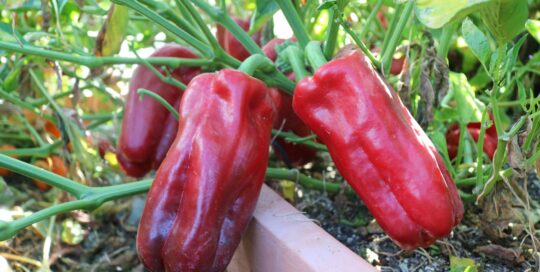Thinning Carrots and Lettuce
Views: 6259
My carrots, I’m happy to report, are going along better than expected.
You’ll recall I constructed a raised bed roughly 2 feet tall by 3 feet long by 2 feet wide and filled it with bagged garden soil picked up at the local big box. My three rows of carrot seedlings are slicing straight down into that stone- and twig-free soil.
Unlike last season’s gnarly and tasteless orange disasters, these carrots are thin and tasty. Not sure if the soil has anything to do with their flavor, but I’m sure my happiness about their performance does make them taste a bit sweeter.
This carrot report brings up an important topic: thinning.
What is thinning?
Thinning, if you’re not familiar, is the act of removing or trimming small seedlings from a row of just germinated seeds. As you probably know from experience, rows of seedlings that germinated—especially those from small seeds such as lettuce and carrots—come up as thick and bushy as Brezhnev’s eyebrows. Fashion police and gardeners alike will tell you to start plucking. If not, you risk crowding out your growing crop.
Even though there are lots of seedlings, the result is a smaller harvest. Snip the small seedlings, or wait just a little while until the seedlings are sturdy, and pull up the transplants and replant them with spacing recommended for that crop.
Easy, right? It may be, but I didn’t do it. Still, my lettuce germination rate this year was unbelievable and the seedlings came in thick. I had grand plans of thinning the rows by transplanting, and one weekend when the lettuce was about 4 inches tall, I set about gently pulling up some seedlings and planting into another portion of the garden at a spacing of about six inches.
Well, I transplanted about 25 plants and realized it looked like I hadn’t even starting plucking those eyebrows. Thinning by transplanting just wasnt going to work. And the waste not, want not adage from my puritanical upbringing wasn’t about to let me just pluck out perfectly good plants.
So, I let them grow. What I ended up with is interesting, too. While the transplants recovered from their transplant shock (I only lost one!) and began to grow in their new space with lots of elbow room, the seedlings began to grow into compact rows. I harvested lettuce from these rows every few inches, every few days. I was, in effect, thinning.
To thin or not to thin carrots?
Two things I’ve learned from the lettuce crop this year:
1. The transplanted lettuce has begun to bolt sooner than the still compact plants in the original germinated rows. I’m curious why.
2. The salad of baby lettuces on menus in fancy restaurants are just lettuce leaves harvested from rows that haven’t been thinned. I’ve been harvesting baby lettuces for months now.
Bringing this back to my carrots, I planted the carrots a few weeks after the lettuce, and like the lettuce, my germination was phenomenally bushy. To thin or not to thin? After all, by not thinning, the growing carrots run the risk of crowding out each other under ground. Again, I chose not to thin. Instead, learning something from my lettuce, I decided to pull up a few carrots here and there, every few days. This gives me a chance to check on the carrot crops progress. And I can give them a quick wash from the garden hose and eat them right on the spot. Sweet success.
Meet Ellen Wells
When you’re raised on a farm, you can’t help but know a thing or two about gardening. Ellen Wells is our expert on edible gardening.…
Ellen's Recent Posts

Pepper Red Impact an All-America Selections Winner






